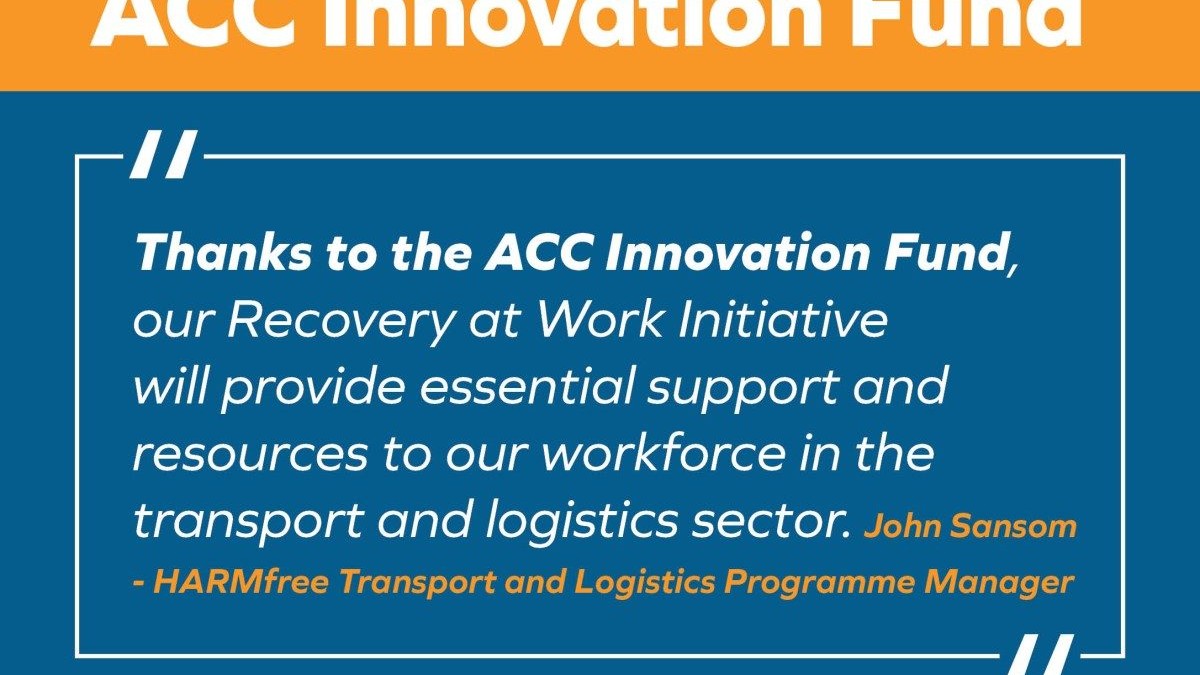NTA receives $100k grant to Develop Recovery at Work Initiative

New Zealand Trucking Association has been awarded an ACC Innovation Fund grant of $100,000 in the second round of funding, towards the development of a Recovery at Work Initiative for the transport and logistics industry.
The ACC Innovation Fund programme rewards innovation in the health sector that helps people recover from injury faster. They partner with health providers to support initiatives that improve outcomes and experiences for people recovering from injury.
The Innovation Fund is available annually and has specific themes for each round. The Innovation Fund round two focused on ideas that helped injured individuals stay engaged with their workplace and recover at work, highlighting the benefits for both personal health and business efficiency. It encouraged proposals that introduced efficient care pathways, developed accessible services, enhanced processes, utilised impactful technology, or created tailored care packages.
Preferred projects were those ready for quick implementation, deliverable within 12 months, accessible to all cultures, supported by relevant Aotearoa New Zealand entities, and had scalability potential.
“We’re excited to announce that we’ve been awarded an ACC Innovation Fund grant, enabling us to develop the Transport and Logistics Recovery at Work Initiative,” said John Sansom, project manager, NTA.
“This initiative is in perfect alignment with HARMfree Transport and Logistics and will be an excellent addition to our online platform. As an industry association, we are closely connected to our members. This project is crucial for maintaining our workers’ connection to their work during recovery.” said.
The Transport and Logistics – Recovery at Work Initiative by the New Zealand Trucking Association will be a comprehensive project aimed at improving recovery processes in the transport and logistics sector following workplace injuries.
The initiative will include the development of a dedicated module on the HARMfree Transport and Logistics online portal, which will feature comprehensive recovery packs tailored to the unique challenges faced by kaimahi (workers) in the sector. It will encompass multilingual resources, informative videos, success stories, and industry-specific management processes, aimed at supporting injured workers’ effective recovery and maintaining their workplace connection.
Emphasising inclusivity, the project will integrate Te Ao Māori principles and focus on physical and mental health benefits, skills retention, and positive impacts on productivity and workplace culture. The initiative will also provide a variety of tools and resources for rehabilitation, ensuring equitable support for the diverse workforce.
“We collaborate closely with our partners National Road Carriers (NRC) to proudly advance health, safety, and well-being initiatives within the transport and logistics industry,” said Sansom.
“The Recovery at Work initiative represents a further step in equipping our industry with the tools necessary for improved outcomes. This initiative will be seamlessly integrated into the HARMfree online portal, enhancing our digital resources and support for the sector.”
The HARMfree Transport and Logistics online portal and forum offers a wealth of information, tools, resources, and a workplace assessment tool, all available for free. The platform is specifically designed for leaders and health and safety champions within the transport and logistics sector.
Developed through a collaboration between NTA, NRC, AutoSense Ltd, Fit for Duty Ltd, Success Formula Ltd (NTI), and with ACC Workplace Injury Prevention Grant funding and support, HARMfree Transport and Logistics enhances workplace safety and worker wellbeing.
“Thanks to the ACC Innovation Fund, our Recovery at Work Initiative will provide essential support and resources to our workforce in the transport and logistics sector. It’s about keeping our injured workers connected and engaged with their work, which is vital for their recovery and our industry’s resilience,” concludes Sansom.





